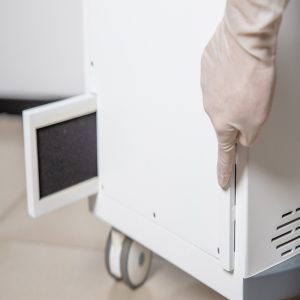Medical Sterilizer: Ensuring Safety and Hygiene in Healthcare Settings

We usually keep on with the principle "Quality To start with, Prestige Supreme". We've been fully committed to offering our purchasers with competitively priced excellent solutions, prompt delivery and skilled support for medical sterilizer.
Introduction:
In the field of healthcare, ensuring safety and hygiene is paramount to protect patients and healthcare professionals from harmful pathogens. One essential tool that aids in achieving this goal is the medical sterilizer. With its ability to eliminate harmful microorganisms, medical sterilizers are crucial in creating a safe and sterile environment. This article aims to shed light on the importance of medical sterilizers, their different types, and the significant benefits they offer.
1. What is a medical sterilizer?
A medical sterilizer is a device used in healthcare settings to eliminate or destroy all forms of microbial life, including bacteria, viruses, and fungi, on medical instruments or equipment. This process ensures that these tools are free from any potential pathogens, preventing infections and cross-contamination.
2. Different types of medical sterilizers:
There are several types of medical sterilizers available, each with its unique method of sterilization. Some common types include:
a) Autoclaves: Autoclaves use high-pressure steam to kill microorganisms. They are widely used for sterilizing surgical instruments, laboratory equipment, and dressings.
b) Dry Heat Sterilizers: These sterilizers use hot air to kill microorganisms by oxidizing them. They are commonly used for sterilizing glassware and powders that are sensitive to moisture.
c) Chemical Sterilizers: Chemical sterilizers utilize chemical agents such as hydrogen peroxide or ethylene oxide gas to kill microorganisms. They are often used for heat-sensitive medical equipment.
d) Plasma Sterilizers: Plasma sterilizers use low-temperature plasma technology to neutralize microorganisms. These sterilizers are suitable for delicate instruments that cannot withstand high temperatures.
3. The significance of medical sterilizers in healthcare settings:
a) Preventing infections: Medical sterilizers play a vital role in preventing healthcare-associated infections (HAIs). By effectively eliminating pathogens from medical instruments, they reduce the risk of infections in patients undergoing medical procedures.
b) Ensuring patient safety: Medical sterilizers provide a safe environment for patients by minimizing the chance of cross-contamination during treatment or surgery.
c) Protecting healthcare professionals: By using sterile instruments, medical sterilizers protect healthcare professionals from potential risks and infections while performing medical procedures.
d) Cost-effective solution: Investing in medical sterilizers can result in significant cost savings for healthcare facilities. By preventing infections, hospitals can avoid the added expenses associated with treating and managing infections in patients.
4. Best practices for using medical sterilizers:
To ensure optimal results and maintain the effectiveness of medical sterilizers, healthcare providers should follow these best practices:
a) Regular maintenance: Medical sterilizers should undergo regular maintenance and calibration to ensure accurate and consistent sterilization.
b) Proper loading techniques: Instruments must be properly loaded in the sterilizer to allow adequate steam or hot air circulation.
c) Monitoring sterilization cycles: Regular monitoring and documenting of sterilization cycles are essential to guarantee the effectiveness of the sterilization process.
We are going to wholeheartedly welcome all clientele during the industry both of those at your home and overseas to cooperate hand in hand, and build a bright potential together.
d) Regular staff training: Healthcare professionals involved in the sterilization process should receive proper training to operate the sterilizers correctly and adhere to safety protocols.
Conclusion:
Medical sterilizers are indispensable tools in healthcare settings for ensuring safety and maintaining hygiene. They offer a range of benefits, including preventing infections, protecting patients and healthcare professionals, and reducing costs. By using different types of medical sterilizers and following best practices, healthcare facilities can create a safe and sterile environment that promotes optimal patient care.
Due to our dedication, our products are well known throughout the world and our export volume continuously grows every year. We will continue to strive for excellence by providing high quality products that will exceed the expectation of our customers.